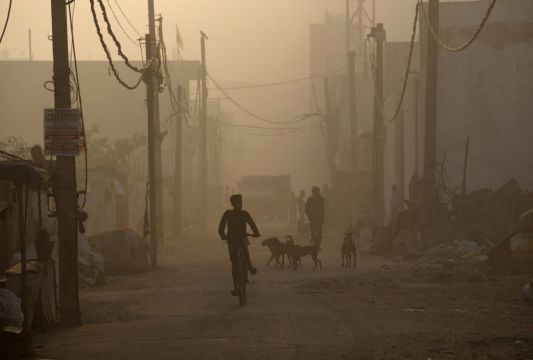Acrid smoke is blanketing New Delhi for a second day after a massive landfill site caught fire during a heatwave.
The landfill in northern Delhi’s Bhalswa area is taller than a 17-storey building and covers an area bigger than 50 football pitches.
Waste workers who live in nearby homes had emptied onto the streets on Tuesday evening. But by Wednesday morning, the thousands of people who live and work at the landfill had begun the dangerous process of trying to salvage material from the fire.

The Indian capital, like the rest of South Asia, is in the midst of a record-shattering heat wave that experts said was a catalyst for the landfill fire.
Three other landfills around the Indian capital have also caught fire in recent weeks.
The landfill was scheduled for closure more than a decade ago, but more than 2,300 tonnes of the city’s waste is still dumped there every day.

The organic waste in the landfill decays, resulting in a build-up of highly combustible methane gas.
“With high temperatures, this spontaneous combustion will take place,” said Ravi Agarwal, the director of Toxics Link, a New Delhi-based advocacy group that focuses on waste management.
Several fire engines rushed to the landfill on Tuesday to try and douse the fire. At night, the landfill resembled a burning mountain and it smouldered until early morning.
March was the hottest month in India in over a century and April has been similarly scorching.

Temperatures crossed 43C (109.4 F) in several cities on Tuesday and are forecasted to continue rising.
“India’s current heatwave has been made hotter by climate change,” said Dr Friederike Otto, senior lecturer in climate science at the Grantham Institute in Imperial College London.
She said that unless the world stops adding greenhouse gases to the atmosphere, such heat waves will become even more common.







